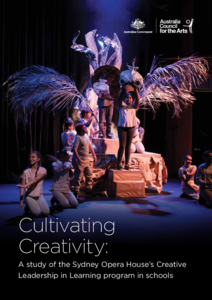
Focused on creativity, Creative Leadership in Learning (CLIL) is an innovative Sydney Opera House program that embeds creativity in schools. A flexible three-year program, CLIL brings the artistic resources and creative processes of the Opera House into the school ecosystem by increasing creativity, communication, collaboration, and curiosity in teaching and learning. The program is a combination of professional learning for school principals and teachers, and collaborative creative projects between students and Opera House artists, developed in the classroom or online over a 20-week period.
CLIL is not intended as a one-size-fits-all model delivered the same way in each school. Instead, the program is delivered via a tailored approach underpinned by a methodological framework in each learning environment. This deep, longer-term and co-constructed method is seen as part of its in-built creativity and value for schools.
Within school communities, CLIL aims to increase the capacity for creative learning, supporting schools to develop the skills and knowledge required to increase engagement, build resilience, and equip students and teachers for future social and professional contexts. The program plays a critical role in demonstrating how creative skills and processes are innate, but often need to be re-learnt or strengthened so that innovative thinking and collaboration can flourish.
More broadly, the program supports a shift in the Opera House’s relationship with schools, from one that is largely transactional to one that builds capacity and creativity over time and which makes the most of all that the Opera House and its people can offer the education sector.
This research report documents the results of a collaborative research partnership between the Sydney Opera House and the Australia Council for the Arts. The research aimed to understand the impact of the CLIL program within schools on both learning and wider community engagement. It also explored the relevance of the program and the application of the lessons learned to the wider education and creative sectors. Drawing on interviews conducted with principals and teachers from participating schools, and data co-created with the SOH CLIL.
Source: Executive Summary
